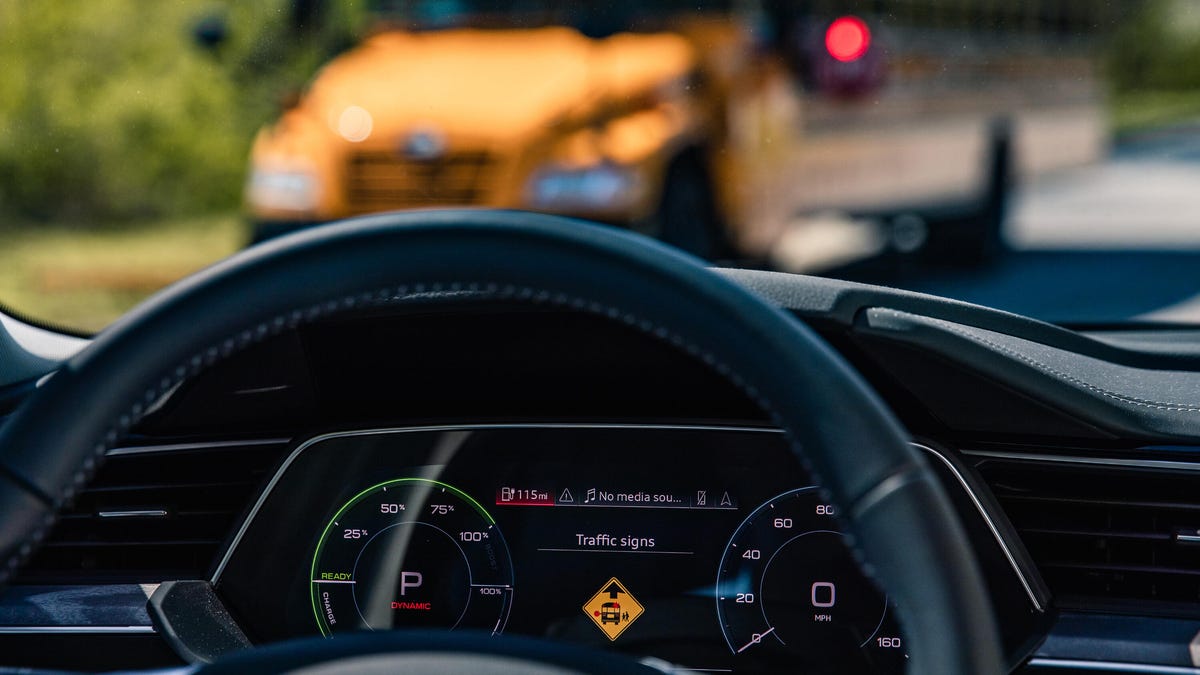Audi wants V2X tech to make school buses safer
The automaker teamed up with public and private partners to expand its vehicle communication tech to children trying to get home safely.
In 2019, there were an estimated 17 million violations of a school bus stop arm across the US. Accidents around school buses are no small problem, but Audi and a number of public and private partners believe they can use cutting-edge technology to help drivers stay within the confines of the law and make the road much safer for children.
Audi on Thursday announced a new partnership with Qualcomm, Applied Information, Blue Bird, the Fulton County School System and others that will see its cellular vehicle-to-x technology (C-V2X) be applied to improve school bus safety. The initial deployment has already taken place in the Atlanta suburb of Alpharetta using communications technology from Applied Information, which has connected infrastructure spread across some 78.5 square miles.
The goals here are twofold. The first is to evaluate alerts and alarms to improve adherence to school zone speed limit reductions. This one relies more on infrastructure itself, using a portion of the 5.9GHz spectrum that the FCC earmarked specifically for C-V2X technology. Upon entering an active school zone, a vehicle equipped with C-V2X will receive an alert, warning the driver to reduce their speed.
The second goal is to reduce the number of stop-arm violations, where drivers ignore an extended stop arm signaling that children are entering or exiting the bus and may need to cross the street. The premise is similar, with the bus broadcasting its stop-arm status to nearby vehicles, which can receive a warning about an extended stop arm before the bus even comes into the driver's view, giving them plenty of time to slow down and act in a safer manner.
Just slow down, folks.
Audi is no stranger to V2X. The automaker started dabbling with the tech in 2006, and since then, it's rolled out multiple pilot programs. Its most notable to date, Traffic Light Information, is capable of using connected infrastructure to give more detailed information on traffic light duration to drivers. TLI is now a part of some 21,000 connected traffic signals across more than 30 major metropolitan areas in the US.
This pilot program can have some far-reaching effects. In addition to helping mitigate some 25,000 injuries and 100-plus fatalities every year, Audi and its partners want to showcase the capabilities of public-private partnerships like these. Ideally, these efforts could convince other automakers and public or private entities to get on board, expanding the benefits to even more groups.
This stuff is very much in the fledgling stages still, as the FCC only recently approved the sliver of cellular bandwidth for C-V2X, but if these pilot programs prove effective, it could create a cascading effect that sets the stage for wider implementation.


